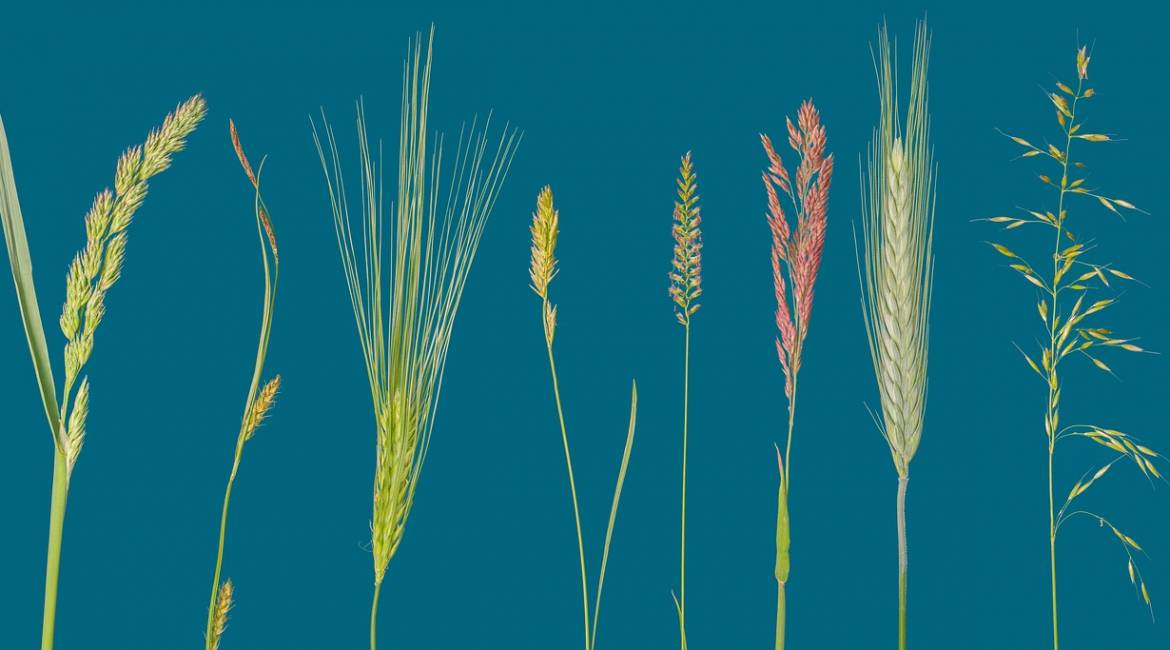Cereals- Grains of Life
June, Summer and new strategies: for feeding ourselves cereals.
Cereals form the basis of our meals in the original Mediterranean diet.
From today let's make seven appointments (one per week) and discover with me the properties, the secrets of the "fab seven" of cereals and then close every week with a super recipe.
Summer is an excellent time to eat cereals, they make a great base for cold dishes.

The beauty and charm of grain cereals is that they contain all the possible life of the plant. A plate of cereals, with the addition of vegetables and legumes is the best way to keep concentrated on all the intellectual activities that we must do such as studying and working on the PC, and having all the energy available for the physical activities we carry out.
Let's start from ABC: the traditional cereals in our kitchen are: wheat, rice, corn, barley, spelt, oats, millet, rye, the lesser known sorghum and the pseudo-cereal buckwheat.


Let's clear up the big difference in eating a whole grain, semi-refined and refined. As we increase the refining process, the nutritional properties that we find inside the cereal decrease, right up to the refined flours which are practically "dead".
Whole Grain - consists of the whole grain which therefore contains bran, germ and endosperm. The whole grain contains fiber, vitamins, minerals and antioxidants.
Hulled Cereal - an initial refining process leads to hulled cereal. In this process only a small part of bran is lost, while keeping the germ and endosperm intact.
Pearly Cereal - Pearling represents a further degree of refining that leads the cereal to lose bran and germ, leaving only the endosperm. The cereal thus treated can be assimilated to a completely refined cereal, such as white flour, and loses all the healing and antioxidant properties and nutrients that instead keep the whole and decorticated cereals.
So in conclusion I recommend using whole or peeled cereals: even if they need soaking and a longer cooking, time, the benefits for the body are considerable and in the end a little organization and a good pressure cooker are enough to decrease the cooking time!
Choose organic cereals, rinse well and toast before cooking so that they remain more digestible and the grain is better shelled after cooking.
Let's start with the king of cereals, wheat, which over the centuries has become the most used cereal (sometimes even in an excessive and overly refined way) in our diet.

It seems that the prototype of the current wheat was the triticum monococcum, a wheat with a small ear and with a very low gluten content, a relative of spelt.
This led to the triticum dicoccum with larger and therefore more profitable ears, and then to the two varieties of soft and hard wheat, the triticum durum, which gave rise to the production of flour, bread and other derivatives, and pasta.
Traditionally, every year, the farmers sowed their seeds, obtained from the previous harvest, but in the early fifties, they began to supply themselves with industrially produced seeds that had been selected and crossed in the laboratory on the basis of greater productivity and yield in processing, which also led to a very high gluten content.
Gluten intolerances have become increasingly frequent in recent decades, and I personally also have problems eating too many products derived from wheat.
That's why I recommend that everyone choose the ancient wheat that in various areas of Italy has been reintroduced as a crop, which has a reduced amount of gluten both as cereal and flour.


In addition to the wheat grain that is little used in today's cuisine except in the delicious Neapolitan dessert "La Pastiera" the recipe for which you can find here (link), we can also find the bulghur which is wheat that is first sprouted, then dried and broken.
It is widely used in Middle Eastern cuisine, I prefer it to couscous because it is a less refined food and has a crunchy consistency.
Do not miss the recipe for the bulghur salad with fish and vegetables that will be posted on Sunday!





